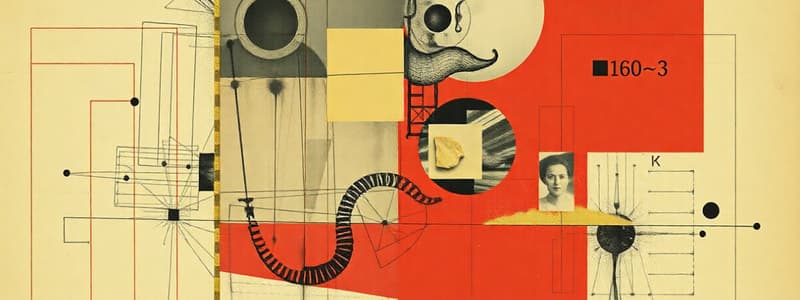Podcast
Questions and Answers
Which of the following sets are related under the relation R defined by |a - b| is even?
Which of the following sets are related under the relation R defined by |a - b| is even?
- {1, 3, 5} (correct)
- {3, 4}
- {1, 2}
- {2, 4} (correct)
The relation R defined by R = {(L1, L2) : L1 is parallel to L2} is reflexive.
The relation R defined by R = {(L1, L2) : L1 is parallel to L2} is reflexive.
True (A)
What is an example of a relation that is symmetric but neither reflexive nor transitive?
What is an example of a relation that is symmetric but neither reflexive nor transitive?
R = {(1, 2), (2, 1)}
The relation R defined on triangles, where T1 is similar to T2, can be deemed __________.
The relation R defined on triangles, where T1 is similar to T2, can be deemed __________.
Match the type of relation with its properties:
Match the type of relation with its properties:
Which of the following is an example of a relation from the set of students in Class XII to Class XI?
Which of the following is an example of a relation from the set of students in Class XII to Class XI?
In mathematics, a relation is always a connection based on a recognisable link.
In mathematics, a relation is always a connection based on a recognisable link.
What is the range of a relation?
What is the range of a relation?
A relation that contains no elements is called the ______.
A relation that contains no elements is called the ______.
Match the types of relations with their descriptions:
Match the types of relations with their descriptions:
Flashcards are hidden until you start studying
Study Notes
Relation Definitions
- A relation between sets A and B is a subset of A × B.
- Empty relation: No element of A is related to any element of A, represented as φ.
- Universal relation: Each element of A is related to every element of A, represented as A × A.
- Reflexive relation: Every element 'a' in set A is related to itself, (a, a) ∈ R.
- Symmetric relation: If element 'a1' is related to 'a2', then 'a2' is related to 'a1', (a1, a2) ∈ R implies (a2, a1) ∈ R.
- Transitive relation: If 'a1' is related to 'a2' and 'a2' is related to 'a3', then 'a1' is related to 'a3', (a1, a2) ∈ R and (a2, a3) ∈ R implies (a1, a3) ∈ R.
- Equivalence relation: A relation that is reflexive, symmetric, and transitive.
Function Definitions
- A function is a special type of relation where each element in the domain maps to exactly one element in the codomain.
- One-one (injective) function: Distinct elements in the domain map to distinct elements in the codomain, f(x1) = f(x2) implies x1 = x2.
- Many-one function: At least two elements in the domain map to the same element in the codomain.
- Onto (surjective) function: Every element in the codomain is the image of at least one element in the domain, for every y in Y, there exists an x in X such that f(x) = y.
- Bijective function: A function is both one-one and onto.
Examples
- Example 1: In a boys' school, the relation "a is sister of b" is the empty relation, while the relation "the difference between heights of a and b is less than 3 meters" is the universal relation.
- Example 2: The relation "T1 is congruent to T2" in the set of all triangles is an equivalence relation.
- Example 7: The relation "f(x) = roll number of student x" in the set of all students of Class X is a one-one and onto function.
Function Historical Development
- The concept of function has evolved over time, starting with Descartes who used the word "function" to describe positive powers of a variable.
- Gregory expanded this to include quantities derived through algebraic operations, while Leibnitz defined functions as quantities depending on variables.
- John Bernoulli introduced the notation φx for functions, later standardized by Euler.
- Lagrange discussed analytic functions and used the notation we recognize today, like f(x) and F(x).
- Dirichlet provided a more rigorous definition of a function which was further refined with the development of set theory.
Studying That Suits You
Use AI to generate personalized quizzes and flashcards to suit your learning preferences.




